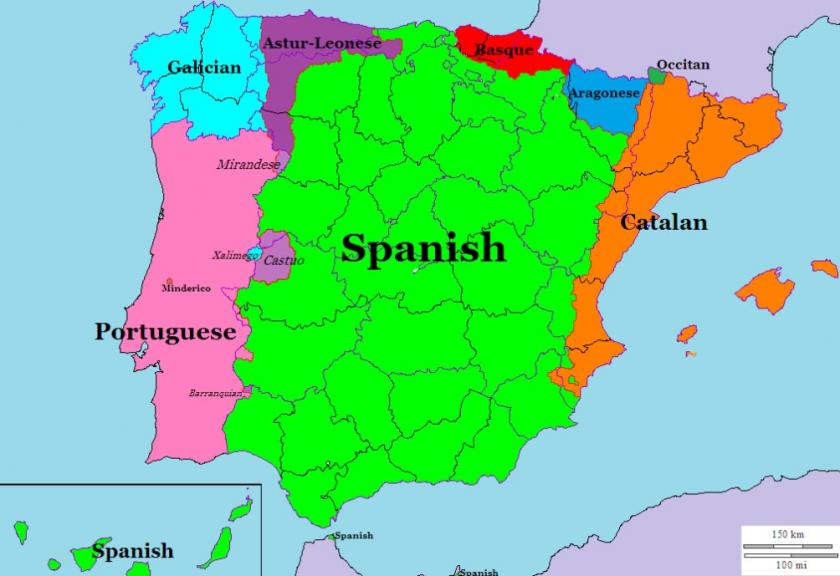
Did you know that Spain has no fewer than five official languages?
11.11.2022The language that is called Spanish in English can be named with two words: español (Spanish) or castellano (Castillian, from Castile). Both terms are used interchangeably in Spain, depending on the region (in Andalusia people mainly say español, in Catalonia almost never), but mean the same thing.
The different languages spoken in Spain sometimes cause great confusion abroad, where dialects are often spoken of. However, there are a total of five official languages, Spanish, Catalan, Basque, Galician and Aranese and two unofficial languages Asturian and Aragonese. Spanish is the only official national language of Spain. The remaining four are official regional languages, which are also the dominant language in some areas:
Article III of the Spanish Constitution of 1978 reads as follows:
- El castellano es la lengua espanola oficial del Estado. (…) Las demás lenguas españolas serán también oficiales en las respectivas Comunidades Autónomas…
Castilian is the official language of the Spanish State. (…) The other Spanish languages are also official in the respective Autonomous Communities…
The four official regional languages of Spain are:
- Catalan: is spoken by just over 18% of the total population, or 7.5 million inhabitants in Catalonia, the Balearic Islands and the Comunidad Valenciana. Strictly linguistically speaking, the Catalan spoken in Valencia is not Catalan but Valencian (Spanish: Valenciano Catalan: Valencià). Today, however, in practice there are virtually no differences, and the language is recognized as Catalan.
- Basque: Spoken by just over 1 million people in the Basque Country and Navarre, 2.3% of the total Spanish population. The Basque language bears no resemblance to any other language.
- Galician: Spoken by just over 2.5 million people, 5.7% of the total Spanish population in Galicia, and parts of León and Asturias. The language is more like Portuguese than Spanish.
- Aranese: spoken by only 4000 people in the Val d'Aran in Catalonia. Linguistically, Aranese is a dialect of Occitan, which is otherwise mainly spoken in France.
- Spanish, Catalan, Galician and Aranese are all Romance languages, and are descended from Latin, but within each of these languages there are also different dialects.
The two unofficial regional languages are:
- Asturian: Spoken by about 100,000 people and protected by law in Asturias. It is not a dialect of Spanish, but a separate language, and is spoken in different areas: Asturias, León, Zamora, Salamanca (there the language is called “llionés), Extremadura (there is the language “extremeñu”) and Cantabria (there the language is called “montañés”).
- Aragonese (Spanish: Aragonés, Aragonese: Aragonés): Spoken by only 10,000 people in the province of Huesca in Aragón. About 40,000 people know or have learned the language (neo-fabláns), mostly in Zaragoza and Huesca. In the rest of Aragon, south of Navarre and some areas in Valencia and Castile-La Mancha, it is often mixed with Spanish. Aragonese descends from Latin.
Spain's four official regional languages play a relatively important role, both at the regional and national levels. For comparison; in Spain, 24% of the population speaks one of the four official regional languages, which amounts to almost 11 million inhabitants.
In addition to the languages mentioned, Spain also has numerous dialects and regional languages. The best example of this is the Spanish spoken in Andalusia by about 7 million people, with large differences in vocabulary and pronunciation. The so-called Andaluz (Andalusian) is difficult for many other Spaniards to understand. Valencian, a variant of Catalan spoken in the region of the same name, is even considered a separate language by many Valencians themselves.